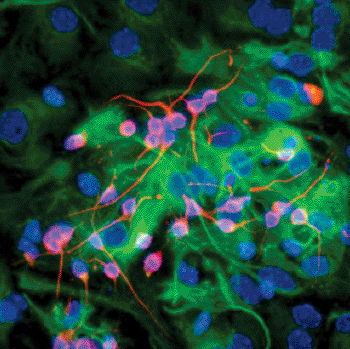Stem Cell Research Reveals the Brain-Protective Qualities of Astrocytes in Stroke Therapy
By LabMedica International staff writers
Posted on 07 Aug 2013
Stem cell research for the disease has focused on developing therapeutic neurons to repair tissue damaged when oxygen to the brain is restricted by a blood clot or break in a vessel. New research, however, indicates that other cells, in particular astrocytes, may be better suited for the task. Posted on 07 Aug 2013
The large, collaborative study, published July 23, 2013 in the journal Nature Communications, demonstrated that astrocytes can protect brain tissue and reduce disability due to stroke and other ischemic brain disorders.

Image: Differentiated neural stem cells (Photo courtesy Dr. Paul Knoepfler, UC Davis).
The scientists started by using a transcription factor known as Olig2 to differentiate human embryonic stem cells into astrocytes. This approach generated a previously undiscovered type of astrocyte called Olig2PC-Astros. More significantly, it generated those astrocytes at nearly 100% purity.
The researchers then compared the effects of Olig2PC-Astros, another type of astrocyte called NPC-Astros and no treatment whatsoever on three groups of rats with ischemic brain injuries. The rats transplanted with Olig2PC-Astros experienced superior neuroprotection together with higher levels of brain-derived neurotrophic factor (BDNF), a protein associated with nerve growth and survival. The rats transplanted with NPC-Astros or that received no treatment showed much higher levels of neuronal loss.
To determine whether the astrocytes affected behavior, the researchers used a water maze to measure the rats’ learning and memory. In the maze, the rats were required to use memory rather than vision to reach a destination. When tested 14 days after transplantation, the rats receiving Olig2PC-Astros navigated the maze in significantly less time than the rats that received NPC-Astros or no treatment.














